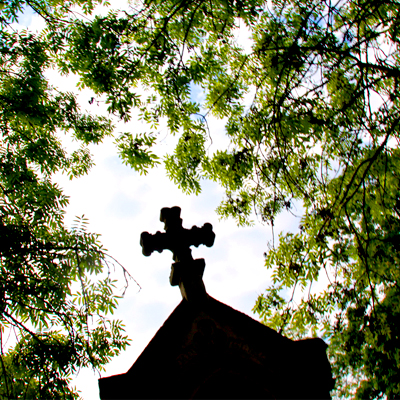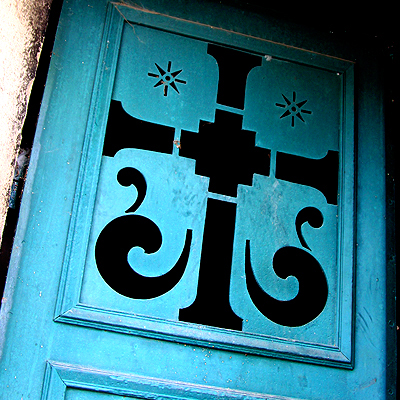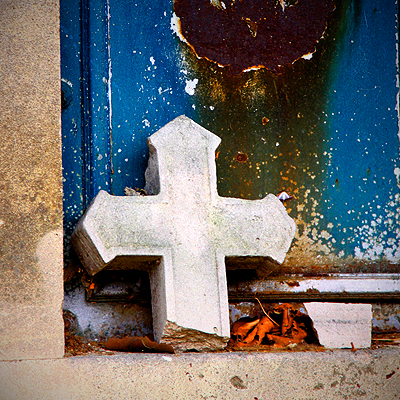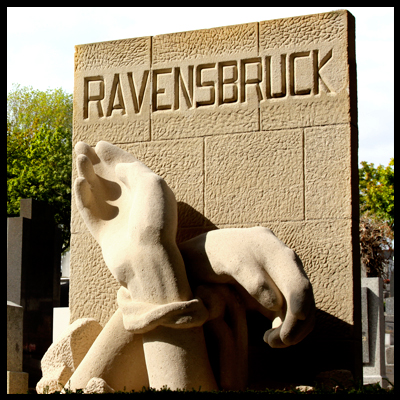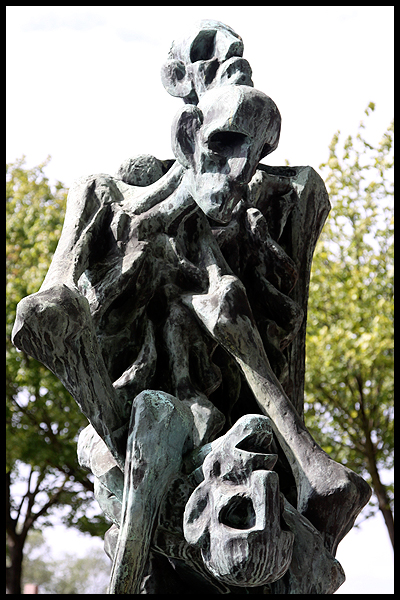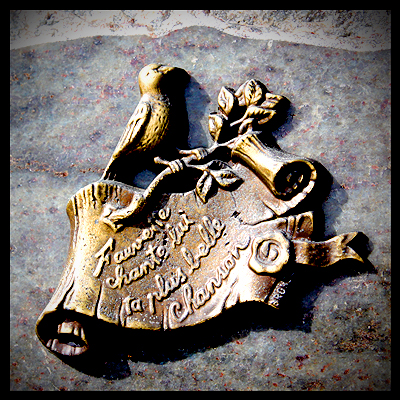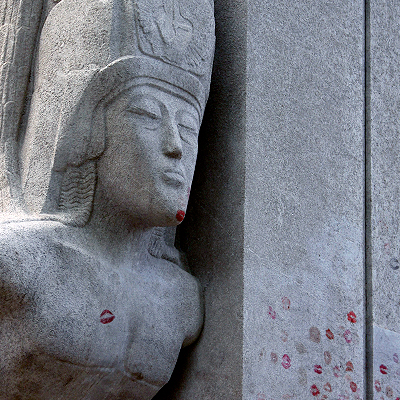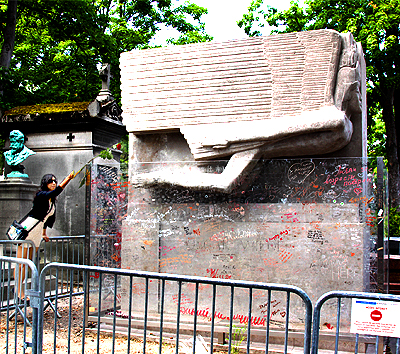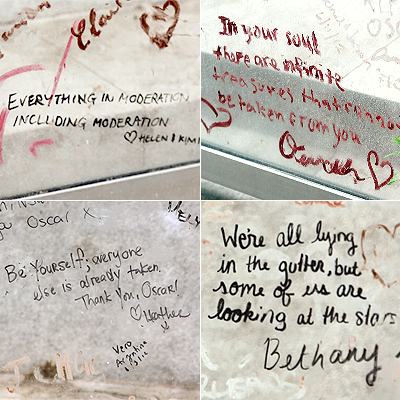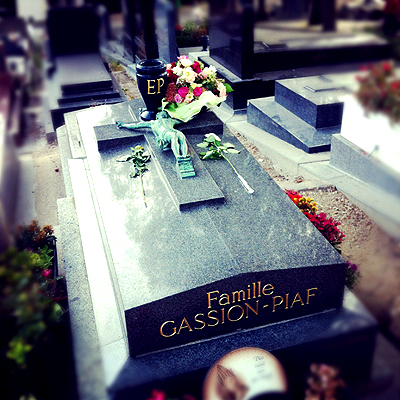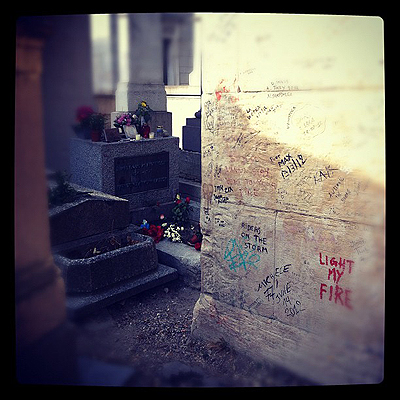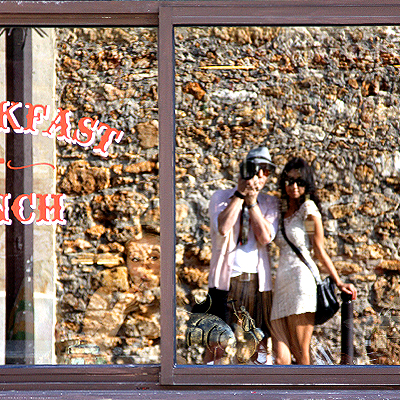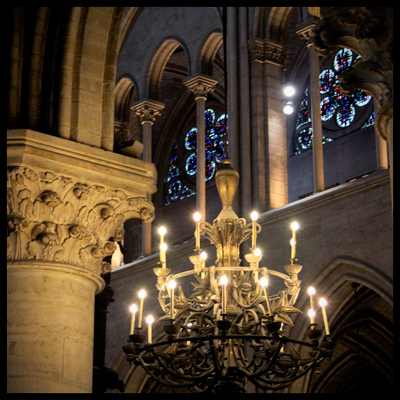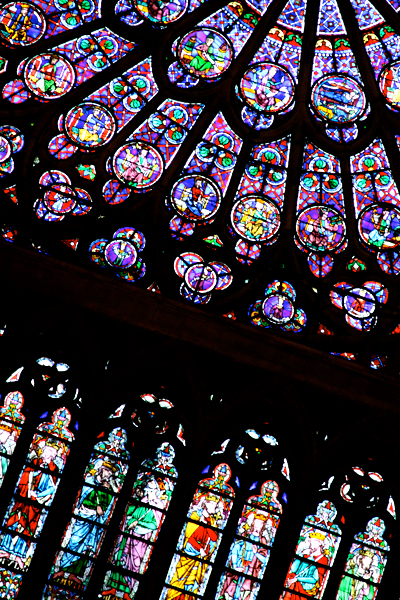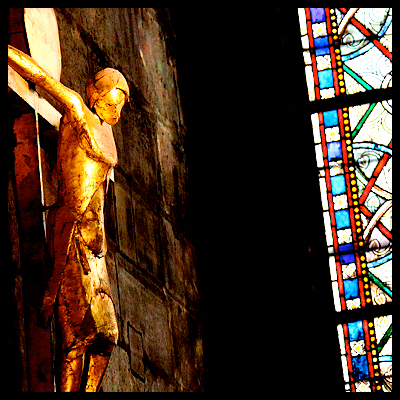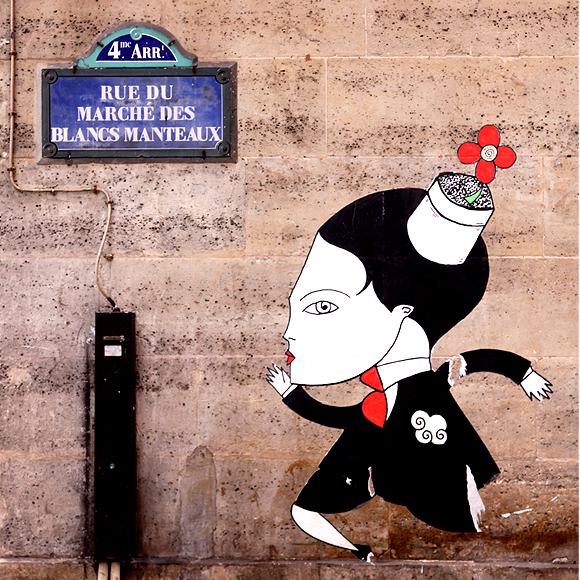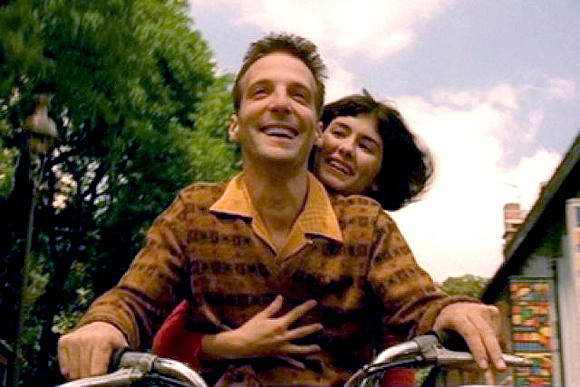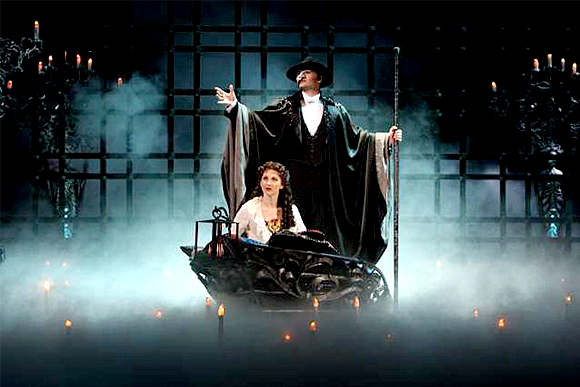The sky is a brilliant blue today in the Marais.
The sun peeks through the light cloud cover; bright enough to put a skip in my step but not quite strong enough to melt away the chill in the air. The perfect weather for a romantic stroll through Cimetière du Père-Lachaise a.k.a. Pere Lachaise Cemetery – arguably the most visited cemetery in the world.
We jump on the metro and disembark at Gambetta for the quickest route to our date with Oscar. It’s the farthest out of Paris’ city centre that we’ve travelled so far, but the map makes it look much further than it actually is. The trip only takes us fifteen minutes or so from our apartment, near Hotel de Ville.
On the short walk to the cemetery entrance, we pass a strategically-placed flower shop, and stop to buy some roses for our fallen friends.

Through the gates at the North-Eastern “Porte Gambetta”, we are confronted by a suburb of headstones. (Thankfully there is kiosk with fold-out maps near the entrance, without which we’d have been completely lost – this is no small-town Sunnydale cemetery!)
The sky is littered with crosses, each one distinct in some way or another. From wrought-iron beasts to stained-glass beauties, we are dazzled by the variety and abundance of them;
We follow the grey paved road around the outskirts of the cemetery, passing graphic memorials to victims of torture and genocide from each of the Nazi concentration camps;
It is our second encounter with the Holocaust this trip, and the experience is none-the-easier. The skeletal effigies are striking with their widened eyes and mouths as if frozen mid-scream; their pain and suffering forever immortalised in stone… lest we forget. It is saddening (an under-statement!) to think of the cruelty they endured, as we stand and bow our heads in silence for them.
We walk on, admiring the elaborately gothic crypts that line each path, as well the plaques and monuments to loved ones;
Eventually, we find our way to Oscar.
Tall and proud he stands still, adorned by the lipstick embraces of countless fans;
The plastic barrier around his tomb is so tattooed by snippets of his poetry that it is now fenced off and unreachable by tourists. It doesn’t stop me though, as I reach over the basket of love-notes and throw my flower at his feet, the only rose to reach him.
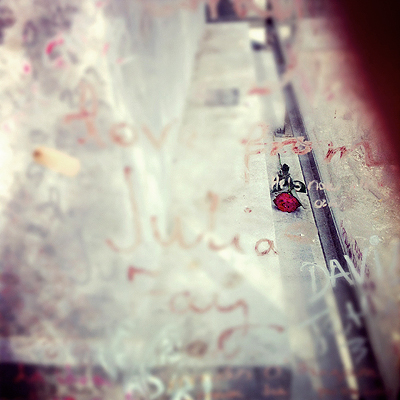
One of my earliest muses, his way with words shaped my love for literature half my life ago. I’ve spent the last fifteen years in the shadow of such great writers, striving to be their equals. And so it was magnificently humbling to be able to stand at the final resting place of one of my mentors, with a simple offering, and a simple word of “thanks”.
The little sparrow – Edith Piaf – is next on our list. Her demure grave is as small and unassuming as she was in her last days. Easy to miss (if it weren’t for the crowd surrounding the grave), her name is emblazoned on the side of the stone along with her family’s.
Her emotionally-charged voice crooned it’s way into my soul around the same time that I discovered Oscar; the sorrow and joys of her life translated directly into song.
Born on the streets of Paris, she was blind by the age of 3 for a period of about ten years. But her voice was stronger than ever as she began to perform in public soon after regaining her sight, on a Pigalle corner with her father. Her life was cursed with many tragedies (to name a few: the love of her life dying in a plane crash, and being labelled a traitor for performing at the German World War II camp – despite her efforts in helping Jews escape Nazi persecution), but the French ultimately embraced her, and on the day of her funeral, her country stood still for the first time since the end of World War II.
The 2007 movie La Vie en Rose, named after one of her more popular songs, is the most recent representation of her life. Marion Cotillard does an excellent job of playing Edith (although I may be biased – she is one my favourite actors, playing one of my favourite musicians!).
I place my second rose beside Edith, wishing her la vie en rose wherever she rests today.
Rated number 11 on Trip Advisor’s Top 40 rock ‘n’ roll travel sites, our final stop is the grave of Jim Morrison. It is an understated resting place for a man of such notoriety, but still the fans have found it, again leaving lyrics and messages to the widely-loved rock legend.
The stone bears a Greek inscription that roughly translates to “true to his own spirit” (I don’t think anyone could argue with that!), and similar to Oscar’s, the site is fenced off, but my husband throws his tribute over it and into the sleeping arms of Jim – our last rose.
We leave Pere Lachaise, content after our pilgrimage from half-way around the world. Exiting from the Southern end, we make our way back to the Metro Phillipe-Auguste.
My tips for the best day-trip?
I would suggest you start at North-East end – it’s the highest point of entrance so you’ll be walking steadily downhill through the day. (Plus, while the cobblestones are pretty to look at, they quickly become difficult to walk on, especially if you’re going up-hill!)
The map below will help you find the entrance, exit, and points of interest I suggest. But make sure you set time aside to plan your visit properly. Pick out the things you want to see, and mark out your route on this downloadable map.
View Père-Lachaise in a larger map
It doesn’t take us long to travel to the Notre Dame, but we have just missed out on the last tour to the top of the cathedral. I would have liked to lurk as Iago once did, watching the world from his belltower. Another time, perhaps… for now I am just glad I am able to experience one of the finest examples of gothic architecture in Europe – something I missed out on during my last visit to Paris.
Once inside, the first thing we notice are the gargantuan, gothic chandeliers illuminating the consecrated halls. They line the length of each hallway, and hang heavy, like clusters of fireflies in the darkness.
Thick clouds of incense waft from the swaying thurible of a robe-clad priest, walking in procession before the evening service. The strongly-fagrant haze combined with the solemn chanting is transfixing, as if we are frozen under their spell. Light streams through the stained glass windows above, casting a kaleidoscope onto their path. I watch them as they shuffle slowly forward, swallowing the colour with their dark shrouds.
Not just “another cathedral”, the Notre Dame is renowned for housing three important relics from the crucifixation; the crown of thorns, a piece of the cross, and one of the nails used on Christ himself. I’m not one for Christian legend myself, but for those who do believe I can see why they chose this church from all the others!
With the sky turning a shade of salmon-pink, we think it only fitting to end our day with a visit to Victor Hugo (author of The Hunchback of Notre Dame), who slumbers for the rest of time at The Pantheon (not to be confused with the Roman Pantheon, which I’ve written about in my Italy posts.).
This iconic building is home to many fallen heroes, with the inscription “To the great men, the grateful homeland” proudly carved across it’s brow, and the trademark roman columns greeting us at it’s entrance.
Another perfect, albeit exhausting day in Paris, at three of our top ten favourite places in this golden city.
What are your top picks for the perfect day in Paris?
 Enjoyed this post? Read the next post from this series: “A Honeymooner’s Guide to six weeks in Europe” now!
Enjoyed this post? Read the next post from this series: “A Honeymooner’s Guide to six weeks in Europe” now!


